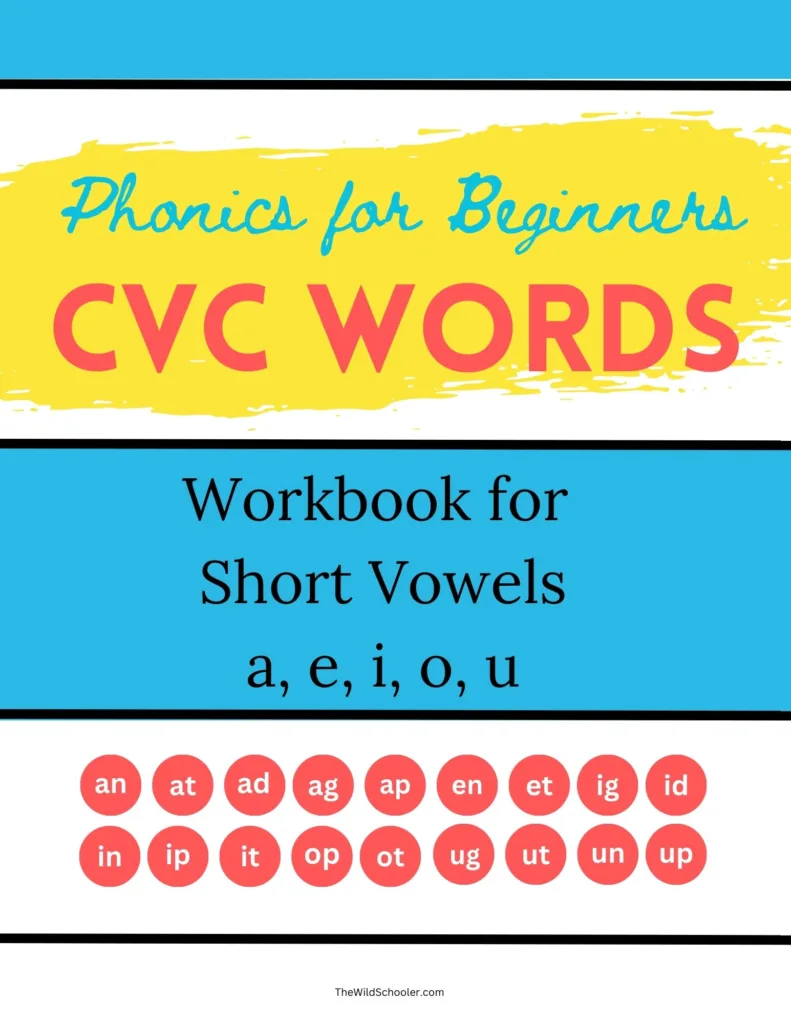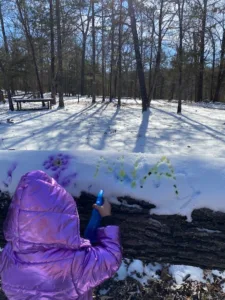In the world of early education, there has been a significant shift towards phonics-based instruction as a more effective method for teaching young children how to read. Traditional reading instruction often relies on memorizing whole words, but the power of phonics lies in teaching children the building blocks of language, enabling them to decode and understand words independently. In this ‘How to Teach Phonics‘ step-by-step guide, we’ll explore how teaching phonics to your kindergartener will outshine traditional methods used in schools, equipping you with the tools to nurture a strong reader and writer from the very beginning of their homeschooling journey.

Step 1: Teach Phonics Letter Recognition
Before diving into phonics instruction, it’s important to ensure that your child has a strong grasp of the alphabet. Kindergarteners should be able to recognize and name each letter of the alphabet and know the sound that each letter makes. You can use letter recognition games, flashcards, and interactive activities to reinforce their knowledge.
One cool phonics game that my kids love to play is called ‘The Letter Hunt,’ which encourages outdoor play while practicing basic phonics skills, such as letter-sound association, letter recognition and word-sound association.

Click here to see how to play this fun phonics game.
Step 2: Teach Phonics Letter-Sound Correspondence
The next step in ‘How to Teach Phonics‘ is to introduce the connection between letters and their corresponding sounds. Begin with the most common consonant sounds and short vowel sounds. For example, start with the letter ‘A’ and its sound /a/. Utilize various tools like alphabet charts, phonics apps, or even simple rhymes to make the learning process engaging.
Duo Lingo has an amazing and free app that teaches kids phonemic awareness. It’s called Duo ABC and is a great tool to use alongside active phonics games to teach letters and their corresponding sounds.

Step 3: Blend and Segment Phonics Sounds
Now onto the third step of ‘How to Teach Phonics‘. Once students are comfortable with individual letter sounds, teach them how to blend these sounds together to form simple words. You can use phonics games, word-building activities, or magnetic letters to create interactive lessons. For instance, introduce CVC (Consonant-Vowel-Consonant) words like “cat” and encourage students to sound out each letter and then blend them together.
You can start with an exercise each day with a different sound such as “at, it, in, an, ig” and encourage your young reader to choose a consonant to add to the beginning and then sound out the complete word.
For example, your kindergartner can add “c, b, m, h, f, r, and s” to “at” to make these words:
CAT, BAT, MAT, HAT, FAT, RAT, SAT
By letting them choose the consonant, you empower your kindergartner to actively participate in the learning process, making it more enjoyable and engaging. As they experiment with different consonants and sound out words, they not only enhance their phonics skills but also develop a sense of accomplishment and creativity. This interactive approach fosters a love for reading and encourages your young reader to explore the vast world of words, one phoneme at a time.
Need some free printable phonics worksheets for CVC Words? We made a CVC Phonics Workbook that you can download for free here. It has a worksheet on each of the Short Vowel Sounds like “AT, AN, AP, ET, EN, IP, IT, IN, OP, OX, OT, UG, UM, UT, etc”.

Step 4: Teach Phonics Digraphs and Blends
After students have a solid grasp of individual letter sounds and blending, it’s time to introduce digraphs and blends. Digraphs are pairs of letters that represent a single sound, such as ‘ch,’ ‘sh,’ and ‘th.’ Blends are combinations of consonant sounds like ‘bl,’ ‘cr,’ and ‘st.’ Use flashcards and word cards to illustrate these concepts and have students practice identifying and pronouncing them.
Step 5: Provide Practice with Decodable Texts
To reinforce phonics skills, offer decodable texts that contain words and phrases that align with the phonics rules you’ve taught. Decodable books are designed to help young readers apply their newfound knowledge in context. These texts gradually increase in complexity, allowing students to practice and build their reading skills at their own pace.
Step 6: How to Teach Phonics with Word Families
Word families are groups of words that share a common phonetic pattern. Introduce kindergarten students to word families like the ‘at’ family (cat, mat, hat, etc.) or the ‘it’ family (sit, hit, fit, etc.). Explore word family worksheets and activities that encourage students to identify the common sound pattern and create new words within that family.
Step 7: Foster Phonemic Awareness
In addition to phonics instruction, it’s essential to develop phonemic awareness. Phonemic awareness is the ability to hear, identify, and manipulate individual sounds in words. Engage in activities like sound segmentation (e.g., asking students to identify the beginning, middle, and ending sounds in a word) and sound blending to enhance this crucial skill.
Step 8: Use Multisensory Techniques
Kindergarten students have varying learning styles, and incorporating multisensory techniques can make phonics instruction more engaging and effective. Incorporate activities that involve sight, sound, touch, and movement. For example, use sandpaper letters for tactile exploration, magnetic letters for visual engagement, and songs or chants for auditory learning.
Step 9: Play Phonics Games
Games are a fantastic way to reinforce phonics skills while making learning fun. Consider incorporating phonics board games, bingo, word searches, and interactive online games into your lessons. These activities not only keep students motivated but also provide valuable practice.
Step 10: Encourage Reading Aloud
To develop fluency and comprehension, encourage students to read aloud regularly. Create opportunities for them to practice their phonics skills in context by reading storybooks, poems, and simple sentences. As they read, offer guidance and support to build their confidence and comprehension skills.
Step 11: Monitor Progress and Differentiate
Regularly assess your students’ progress to identify areas where they may need additional support. Not all students learn at the same pace, so it’s important to differentiate your instruction. Some students may benefit from additional reinforcement of specific phonics concepts, while others may be ready for more advanced phonics skills.
Step 12: Provide a Print-Rich Environment
Create a print-rich classroom environment that encourages literacy. Display labels, posters, and charts featuring the alphabet, common sight words, and phonics rules. Surround students with print to help reinforce their phonics knowledge and encourage reading and writing.
Step 13: Encourage Independent Reading
As students gain confidence in their phonics skills, promote independent reading. Set up a classroom library with a variety of leveled books and materials. Encourage kindergarteners to choose books that match their reading abilities and interests. Regular independent reading practice will help them develop as fluent readers.
Step 14: Be Patient and Supportive
Teaching phonics to kindergarteners can be a rewarding but sometimes challenging task. It’s important to be patient, supportive, and adaptable in your approach. Every student progresses at their own pace, so offer encouragement and celebrate small achievements along the way.
In conclusion, teaching phonics to kindergarten students is a critical part of their early literacy development. By following this step-by-step guide, you can provide young learners with a strong foundation in phonics, setting them on the path to becoming proficient readers and writers. Remember to make the learning experience engaging, interactive, and enjoyable to foster a love of reading and ensure lasting success in literacy.
References:
Stanford brain wave study shows how different teaching methods affect reading development












